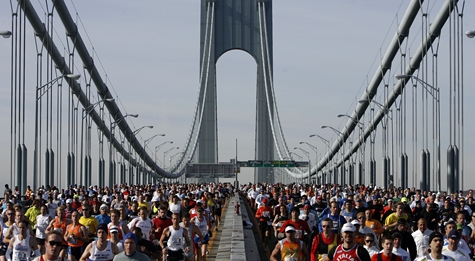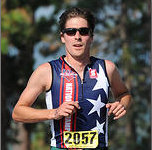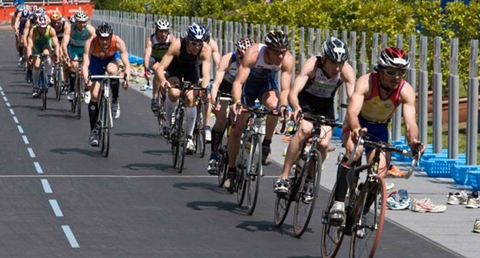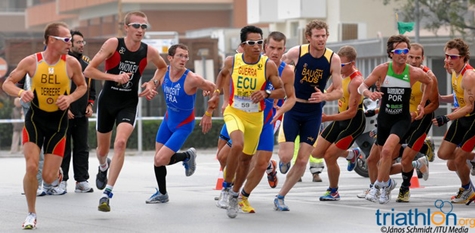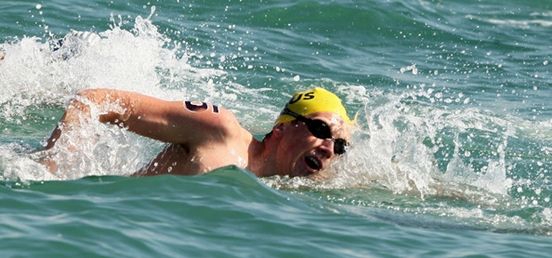Choosing Running Shoes
You’ve decided you are going to start a running program or it’s at least time to update your running shoes. Those with the luxury of a specialty running shop in the neighborhood are likely to come away from the experience without a scratch. The rest of us must weather the big box sporting good warehouse at the local strip mall. Regardless, what you’ll likely find is a wall full of styles and brands and what seemed like a simple task just turned into a lot of second-guessing. But you can go into the purchase armed with a little more information and walk or run out feeling a little better.
All running shoes essentially fall into one of three categories: lightweight training/performance, neutral training, or stable training. For the sake of simplicity we are going to remove the outliers like racing flats or spikes (used for sprinting or cross-country racing) and focus on the shoes you’ll likely need.
Running shoes are essentially no different than other shoes when it comes to construction. Like custom dress shoes the cobbler used to make at the corner store, the template that all manufacturers use is called the last. Essentially, these are the forms which determine the shape of the shoe and each brand has their own “proprietary” shape. This gives the brand its distinctive fit (along with heal and toe counters ) and each brand will market theirs as the best.
The “upper”, textiles layered and stitched together to make the boot or slipper you actually put your foot in, is sewn together around the last, a process called “forced lasting”.
Now, the last used for the three categories I mentioned earlier also have three basic shapes: curved for lightweight or performance trainers; semi-curved for neutral trainers; and straight for stability trainers. Once the uppers are made they are glued to the midsole (which already has the outsole attached) and bingo-you have a running shoe.
Biomechanics
Most people fit in the neutral or semi curve lasted shoe. They will make up the bulk of the styles or skus on the wall. Chances are this is what you’ll be running in. The neutral shoe will fit and work for most runners but may not be adequate if you are a severe overpronator or underpronator (supinator).
Everyone pronates to some degree, it’s the natural motion of foot strike and roll-through that you do when walking and running. Some of us do this in a quick and violent motion, usually due to a low or flattened arch, that a lot of stress is sent up sharply up the leg and can lead to a propensity for shin splints or joint pain. Some runners have very high arches and run or walk along the outside of the souls of their feet and we usually throw them into the underpronator bucket. This is rarer but usually requires a flexible shoe. Underpronators will likely need a curve lasted shoe while overpronators might need the straight lasted shoes found in the stability category. The rest of you are neutral.
You’ll also want to pay attention to your weight. The heavier you are, the more you may want to consider a stability shoe. Stability shoes are usually a bit heavier and can take a little more of a beating due to the denser makeup of the midsole material as well as the increased amount of material under the medial side of the foot. By choosing the correct shoe for your biomechanics, you slow down the rate of pronation (literally, the time it takes for your gate to roll over) and dispersing the energy through the gate.
So now you know where to start when it comes to the shape of the shoe and you can narrow your focus on the shoe wall.
Running Shoe Materials
The midsole will be the biggest factor when it comes to the “feel” of the shoe and essentially determine its life. Back in the day, sheets of EVA, or ethyl vinyl acetate, were cut and glued to the upper. It was a very soft and cushy material and feels great when you put them on in the store. The problem with sheet EVA is that it isn’t very stable in this form and wears out quickly. EVA is a lot like a sponge and can absorb moisture and dirt easily shortening its effectiveness rapidly. Polyurethane was another material that can still be found in a small number of shoes. It is more stable, but a harder material that gets brittle with time. Today shoes are usually made up of different densities of EVA (compressed or blown into molds) that determine the cushion, flexibility and stability of shoes. The different densities are indicated by the multiple colors of the foam. Gray is usually denser than the white. You’ll easily recognize this when trying out shoes. Manufacturers can also create any number of molds to either blow or compress the EVA into for aesthetic or stability purposes.
Running Shoe Technology
Back in the 1980’s, Nike began using air bladders in the midsole. This set off a wave of “technology” added to other manufacturer’s shoes: Gel in ASICS, Grid in Saucony, etc. They have gotten better and are pretty interesting, but as much a marketing up-sell as they are something to make your shoe more effective. Don’t let that determine which shoe is best for you. Another trend in conjunction with adding “gimmicks” to shoes was shaping the midsole for design purposes. Ironically shaping the midsole may compromise the shoe’s stability, so weight saved was added back in with things like torsion bars to stabalize the shoe- a net weight reduction of zero. But shaping midsoles can allow manufacturers to improve stability and add multiple densities- a net gain. Basically, don’t get wooed by wiz-bang claims. Get the shoe that works for you regardless of the “technology”.
Running Shoe Brands
I always hear, “brand X sucks. I only wear brand Y.” This is understandable to a certain degree as we all have our loyalties, but it isn’t very rational. The fact is every manufacturer has a shoe for your needs, but maybe not the best shoe fit for you. Most stores only carry a few skus from any one manufacturer and they fill their wall with the best shoe for that category either due to popularity or price point. So when you find one that works for you, stick with it. Eventually the brand will update that model and the changes in textiles or design might adjust that fit forcing you to look for something else. Take advantage of that change by trying something else. The shoe last may be narrower for one manufacturer and because you have narrow feet, it’s a brand that works for you. Sizing also may differ from brand to brand so don’t get too hung up on that either.
Price Point for Running Shoes
Price may be the ultimate determining factor for your purchase, but rest assured you don’t need to buy the most expensive shoe to get a good one. Most brands build their line around a core shoe or group of shoes. This core is the sweet spot of price, technology, and function and the shoes in this group will get updates every couple of years. You will usually find these shoes in the $75-$100 range and you should be able to find a shoe that fits your needs at this price point. Spend more and you are paying for nicer materials, newer technology, or smaller product runs. Pay less and you may be sacrificing stability and quality (be careful at some of the big-box stores as they will sometimes negotiate with a manufacturer for an inexpensive shoe that is not a regular inline model and usually of lesser quality).
That about covers it, but to summarize:
- Choose the best last for your biomechanics
- Choose the upper that fits your foot (fit is more important than feel)
- Don’t get hung up on brand
- Stick to the core price point if you are concerned about cost
- Try to find a specialty running store for your first purchase
Happy hunting!
Chris Harig is competitive runner, multisport athlete, and coach based in the
Seattle area. In 2007 and 2008, he was the top American at the ITU Duathlon
World Championships.
More about Chris Harig.

